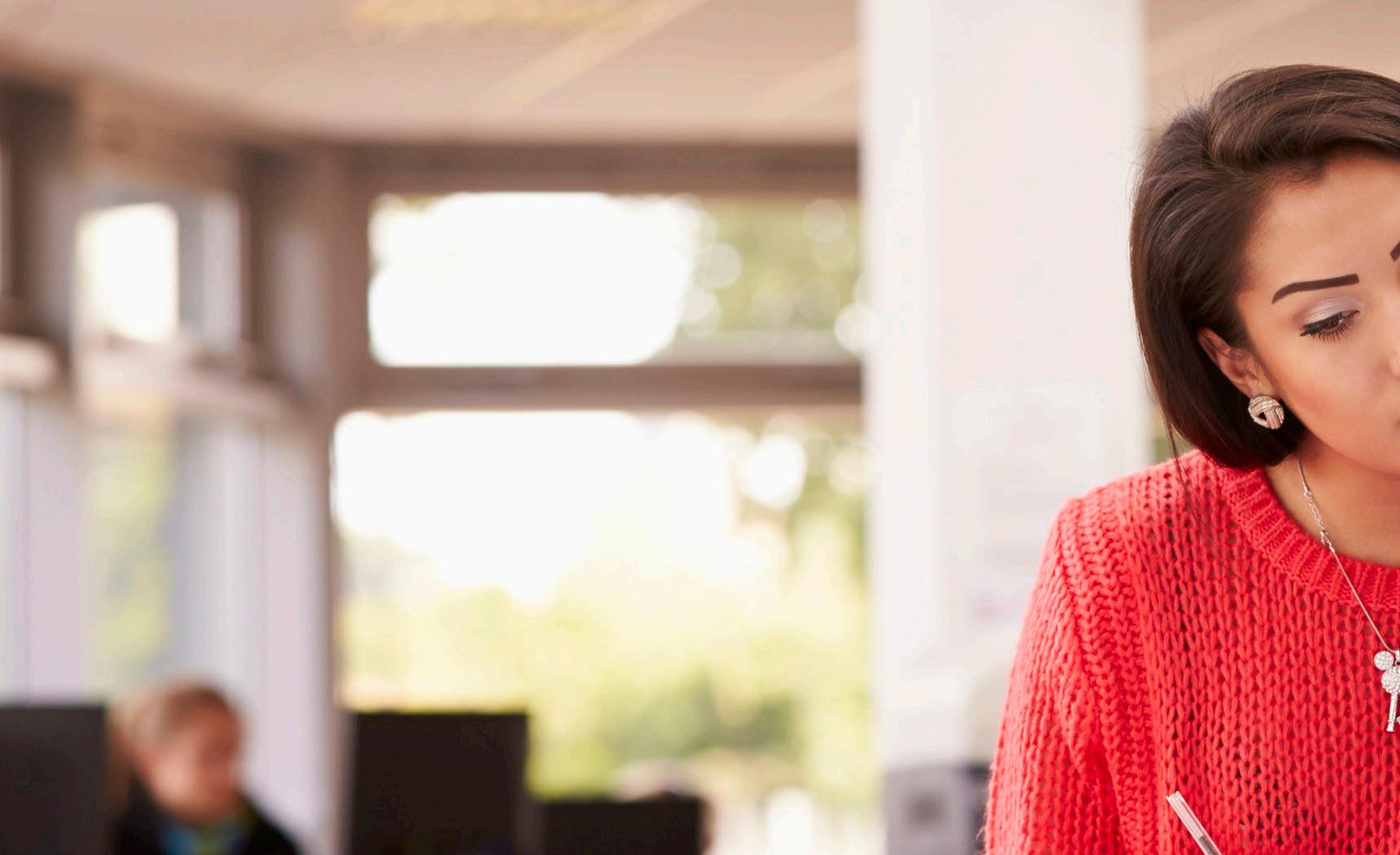THE RESEARCH ISSUE
how do the benefits of peer-to-peer support TRANSLATE INTO AN EMPLOYABILITY CONTEXT?
Paul Gratrick, Employability Business Partner at the University of Liverpool, outlines a HECSU-funded project to research the use of peer-topeer models in an employability space and key stakeholders’ perceptions of this design and delivery method. n 2018, the University of Liverpool holistically redesigned its service to achieve scale in employability delivery and to increase student engagement, with one element being the introduction of the UK’s first student-led frontline service. A roster of 20 current students operate our Career Studio. There are known benefits to peer-led models. In a context where there is increasing need for wellbeing support, peer-led scenarios can lead to lower anxiety in students (Roger & Tremblay, 2003). Peer-topeer interactions also contribute to students making new social connections (Glaser et al, 2006) and students who engage in peer-models have higher levels of university integration (Collings, 2014). Amongst these
22
PHOENIX JUNE 2020
benefits, strong clarity is required on the role of each participant in a peer-to-peer scenario (Colvin & Ashman, 2010). It has also been noted that there are significant benefits to the peer-leader/mentor in such models (Dennison, 2010).
RESEARCH DESIGN To ensure our Careers Studio model was operating effectively, we sought HECSU funding to explore two research questions: 1. How do the known benefits of peerto-peer support translate into an employability context for the purposes of enabling a service to effectively scale its offer to stakeholders? 2. What components are needed to successfully implement a service-wide change process for the benefit of key stakeholders?
THE LEVELS OF POST-VISIT ACTIVITY ARE
EXACTLY WHAT WE AIM TO ENCOURAGE
AS PART OF OUR NUDGE THEORY APPROACH
We began surveying students from September 2019, ending in March 2020 due to Covid-19 campus closure. To examine best practice in service redesign, a series of focus groups with key stakeholders were due to take place in Spring 2020, but these were postponed. However, we have been able to
gather enough data before the unexpected disruption. All student interactions were recorded. In the week following their Career Studio visit, students were emailed a digital survey to complete. The survey was sent to unique visitors in each semester, with the incentive of a monthly prize draw to encourage completion. During the survey timeframe we received 267 viable responses from 2,590 unique visitors. This gives us a confidence level of 90% and margin of error of 5% in our findings, leaving them statistically significant.
KEY FINDINGS We asked students about their interactions with Career Coaches. The Career Studio needs to be a welcoming space and we know that it’s important that people understand their roles in peer situations (Colvin & Ashman, 2010). Students agreed that coaches were friendly (99%), knowledgeable (89%), trustworthy (93%), and that they had outlined how they can help (91%). Glaser et al (2006) and Collings (2014) established how peer models help make new connections and aid integration. Asking students about this, we saw that: • 79% strongly agreed/agreed that the Career Coaches related to their personal situation • 77% were very positive/positive about discussing their query with another student • Only 5% were unaware that the Career Coaches are current students
















